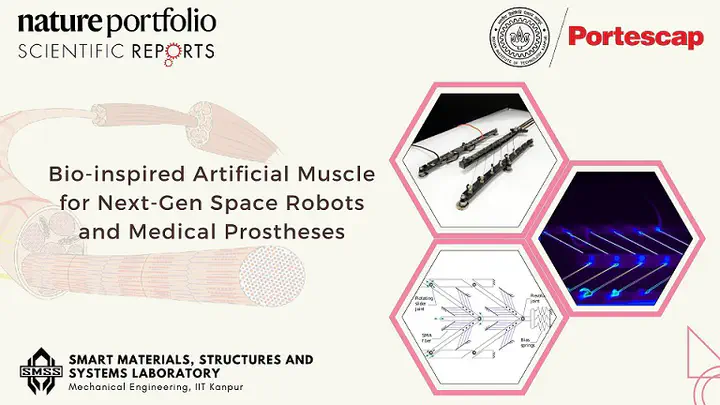Design and development of non-magnetic hierarchical actuator powered by shape memory alloy based bipennate muscle

“From Fibre to Force!”
Our latest research on the Design and Development of Bio-inspired Shape Memory Alloy-based Artificial Muscle for Medical and Space Robots has been published with Nature Portfolio Springer Nature Group in Scientific Reports.
Abstract
Actuators are ubiquitous to generate controlled motion through the application of suitable excitation force or torque to perform various operations in manufacturing and industrial automation. The demands placed on faster, smaller, and efficient actuators drive innovation in actuator development. Shape memory alloy (SMA) based actuators have multiple advantages over conventional actuators, including high power-to-weight ratio. This paper integrates the advantages of pennate muscle of a biological system and the unique properties of SMA to develop SMA-based bipennate actuator. The present study explores and expands on the previous SMA actuators by developing the mathematical model of the new actuator based on the bipennate arrangement of the SMA wires and experimentally validating it. The new actuator is found to deliver at least five times higher actuation forces (up to 150 N) in comparison to the reported SMA-based actuators. The corresponding weight reduction is about 67%. The results from the sensitivity analysis of the mathematical model facilitates customization of the design parameters and understanding critical parameters. This study further introduces an Nth level hierarchical actuator that can be deployed for further amplification of actuation forces. The SMA-based bipennate muscle actuator has broad applications ranging from building automation controls to precise drug delivery systems.